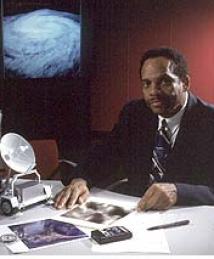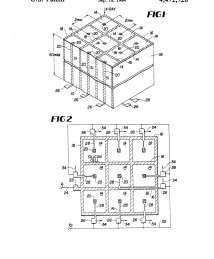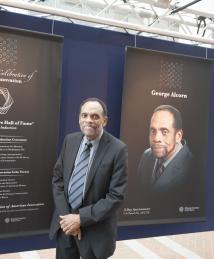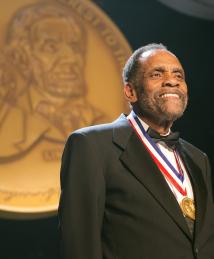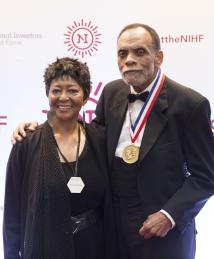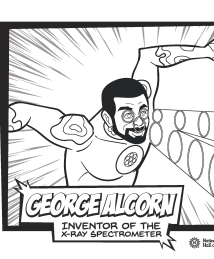George Edward Alcorn
"The big thing about being in science and engineering is that if you have a good, interesting project going, work is not coming to work, it’s coming to an adventure."
George Alcorn was a pioneering physicist and engineer noted for his aerospace and semiconductor inventions. His X-ray imaging spectrometer, patented during his career at NASA Goddard Space Flight Center (GSFC), allowed for the detection of radio signatures at a more distant and accurate rate than previously possible and influenced the continued evolution of imaging devices.
Alcorn was born in Indianapolis in 1940. At an early age, he was introduced to science and engineering by his father, an automobile mechanic. The two would spend hours together under the hoods of cars. In an interview with the National Inventors Hall of Fame®, Alcorn shared, “I was a very fortunate boy, in that my hero was my daddy. I thought that what my father was doing was science.”
As Alcorn grew, so did his interest in STEM (science, technology, engineering and mathematics). He graduated with a bachelor’s degree in physics from Occidental College in 1962, then studied atomic and molecular physics at Howard University, where he received his master’s degree in 1963 and doctorate in 1967. Pursuing a career in developing scientific technology in private industries, he secured a job at IBM, where he conducted significant work in high-performance semiconductor devices.
In 1978, Alcorn accepted a position at NASA GSFC, where he worked for the remainder of his career. Here, he developed technologies for space stations and private institutions across the nation.
Alcorn invented the X-ray imaging spectrometer in 1982 and patented it in 1984. This revolutionary technology used a focused beam of charged atom particles to lift samples, allowing scientists to more accurately separate and identify the elemental and chemical components of a substance. Alcorn was named the 1984 NASA GSFC Inventor of the Year for this work.
Used with space telescopes and other satellites, X-ray imaging spectrometers provide valuable data for a wide range of scientific and technical applications. With improvements that addressed structural and performance deficiencies, Alcorn's devices and their descendants have been used to conduct planetary mapping, search for new planets, create star charts to reveal motions of systems and examine deep space phenomena.
Dedicating his career to expanding global interactions with astronomy, Alcorn developed new technologies for the Freedom space station in partnership with agencies located in Japan, Canada and Europe, though these projects never went to space. He also took on major roles in developing inventions such as the Airborne LIDAR Topographic Mapping System (ALTMS), which emits light toward the Earth’s surface to collect data that would be challenging for scientists to analyze on the ground. In 1999, Alcorn received an award from Government Executive magazine for his role in the development of ALTMS, which since has been applied by thousands of companies that use drones to gather data.
While working at NASA, Alcorn also became an educator. Empowering the next generation of STEM leaders, he taught physics and engineering at Howard University while simultaneously taking on roles at the University of the District of Columbia, where he worked to encourage and support science and engineering doctoral candidates from underrepresented groups. To reach younger students, Alcorn also became a founder of Saturday Academy – a weekend math and science honors program for Washington, D.C.’s inner-city middle schools.
“I believe it’s so important to start learning and enjoying learning as young as possible,” Alcorn said. “There are certain things you can learn better, learning it earlier. It gives children even more of an advantage.”
Alcorn’s many honors included the Robert H. Goddard Award of Merit – the highest honor from NASA’s GSFC – in 2010, and the Alumni Seal Award for Professional Achievement from Occidental College in 2012.
Discussing his diverse and impactful work, Alcorn said, “If you have a good, interesting project, work is not coming to work – it’s coming to an adventure.”
